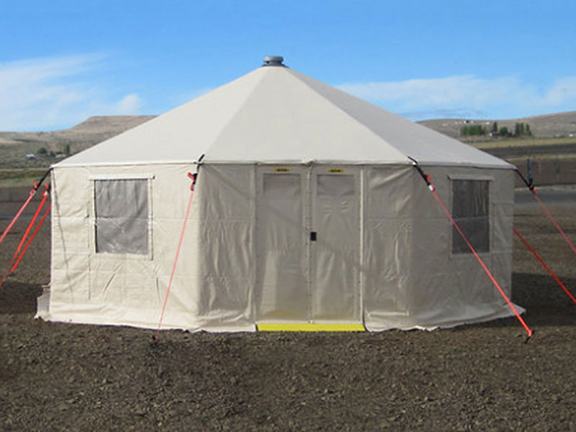Radio frequency welding machines utilize high frequency electromagnetic energy—typically operating at 27.12 MHz—to join thermoplastic materials through internal heat generation. The operation of RF welding equipment centers on sophisticated RF generators that convert standard electrical current into high-frequency radio waves. The welding process works by applying an electrical field that causes polar molecules within compatible plastics to vibrate, creating molecular friction that generates heat throughout the material layers rather than just surface heating.
Radio Frequency Welding vs. High Frequency Welding - Are They the Same?
The terms radio frequency welding and high frequency welding are completely interchangeable in industrial applications. Both RF welding and HF welding refer to the identical process using 27.12 MHz electromagnetic energy for dielectric welding. The terminology varies by region and industry, but the underlying radio frequency welding technology remains consistent.
Manufacturing professionals may encounter these systems labeled as RF welders, HF welding machines, or high frequency welding machine units, but all operate on the same fundamental principles of electromagnetic energy application.
Alternate Names for Radio Frequency Welding
The RF welding process appears under several names across different industries and technical documentation:
- RF sealing
- Dielectric welding
- HF plastic welding
- RF heat sealing technology
- High frequency plastic welding
This terminology diversity stems from the technology’s application across medical industry, automotive sector, and consumer goods manufacturing, where each field has developed its own preferred nomenclature for frequency welding machines.
How Does Radio Frequency Welding Work? (Step-by-Step Process)
Understanding the RF welding work mechanism requires examining how high frequency radio waves interact with polar thermoplastic materials. Unlike hot air welding or impulse welding that relies on an external heat source, radio frequency energy creates heat generation directly within the plastic surfaces through electromagnetic field interaction. This principle is the foundation of both RF welding and HF welding processes, which are used interchangeably to describe this internal heating method.
The Role of Electromagnetic Energy
When RF welding equipment applies 27.12 MHz high frequency electromagnetic field to polar plastics, the electric field causes molecular friction within the material properties. This dielectric heating process generates heat uniformly throughout the material layers, creating intimate contact between surfaces without requiring multiple weld passes or extended heating cycles.
The electromagnetic energy penetrates the surrounding material rather than heating from the outside, enabling the welding process to create durable welds even in thicker materials while maintaining structural integrity of the finished product.
The Radio Frequency Welding Process in 5 Steps
The RF welding process follows a precise sequence that ensures consistent weld quality and production efficiency:
- Insert material between brass or aluminum electrodes - Compatible thermoplastic materials are positioned between the upper electrode and lower electrode assembly
- Apply 27.12 MHz RF current through generator - The RF welding technology activates, sending high frequency energy through the welding equipment
- Internal heating via molecular friction in polar thermoplastics - Dielectric loss within the electrical field creates uniform heat generation throughout the weld area
- Apply pneumatic pressure and maintain 2-15 second dwell time - Prescribed force ensures intimate contact while the material cools under controlled conditions
- Allow controlled cooling and remove finished weld - The material cools while maintaining pressure, creating an airtight seal with optimal bond strength. The upper electrode and corresponding lower electrode create an electrical field that generates heat within the plastic surfaces themselves, ensuring complete fusion across the weld area.
This automated process eliminates air gaps and ensures consistent results across high production volume applications. Real-time parameter adjustment technology compensates for material variations and environmental changes, minimizing waste and maximizing first-pass quality rates.
What Plastics Work with Radio Frequency and High Frequency Welding Machines?
Material compatibility represents the most critical factor when selecting RF welding equipment for manufacturing applications. The welding process, including HF welding, only works effectively with polar thermoplastic materials that respond to dielectric heating through their molecular structure.
Thermoplastics Compatible with RF Welding
Radio frequency welding technology works optimally with materials containing polar molecules that respond to high frequency electromagnetic energy:
- PVC (Polyvinyl Chloride) - Most common material for RF heat sealing applications. PVC remains the most responsive material for RF welding.
- PU (Polyurethane) - Used extensively in medical devices and technical applications
- TPU (Thermoplastic Polyurethane) - Excellent for automotive sector and flexible applications
- PETG - Preferred for food packaging and medical industry applications
- EVA - Common in flexible packaging and consumer products
- Thermoplastic elastomers - Specialized grades for demanding applications
Materials Not Suitable for RF Welding
Non-polar plastics cannot achieve effective bonds through radio frequency welding due to their molecular structure:
- Polyethylene (PE) - Requires special additives for RF compatibility
- Polypropylene (PP) - Not responsive to electromagnetic energy
- PTFE - Completely inert to radio frequency energy. Non-polar materials present challenges for traditional RF welding without specialized additives or surface treatments.
| Material | RF Weldable | Notes |
| PVC | Yes | Most common RF welding plastic |
| TPU | Yes | Used in inflatable and automotive |
| PE | No | Requires additives for RF compatibility |
| PU | Yes | Medical and technical applications |
| PP | No | Non-polar, not RF responsive |
Understanding material properties ensures proper selection of RF welding machines for specific manufacturing process requirements.
Radio Frequency Welding Applications by Industry
High frequency welding machines serve critical roles across various industries where traditional welding methods cannot achieve the required seal quality, speed, or consistency. The technology excels in applications demanding hermetic sealing, high throughput, and regulatory compliance.
Medical and Healthcare
The medical industry relies heavily on RF welding technology for products requiring sterile, contamination-free sealing:
- IV bags and blood bags - Hermetic sealing prevents contamination while maintaining flexibility
- Blood pressure cuffs - Durable welds withstand repeated inflation cycles
- Diagnostic pouches - Secure containment for laboratory samples
- Medical device components - Critical sealing for life-safety applications
- Sterile packaging solutions - Clean seals without adhesives or foreign materials
Automotive & Aerospace
Radio frequency welding machines create high-strength seals for safety-critical automotive applications:
- Airbag fabrics - Precise sealing ensures proper deployment characteristics
- Seat covers and armrests - Aesthetic and durable joining for interior components
- Dashboard elements - Clean seaming for luxury vehicle applications
- Technical membranes - HVAC and filtration systems requiring airtight seals
Industrial & Consumer Goods
Manufacturing processes across consumer and industrial sectors utilize RF welding equipment for high-volume production:
- Inflatable boats and life jackets - Safety-critical sealing where failure is not acceptable. High frequency welding creates airtight, high-strength seams essential for these products.
- Pool toys and air mattresses - Cost-effective production with consistent quality
- Tarps and architectural membranes - Large-scale sealing for weather protection
- Blister packaging - Clear, tamper-evident sealing for retail products
Radio frequency welding technology offers distinct advantages over alternative joining methods, particularly in applications requiring hermetic sealing, high throughput, or consistent quality across large production volume runs.
Seam Strength and Durability
RF welding creates molecular-level fusion that typically achieves 90% or greater bond strength compared to the base material. This welding process produces durable welds that can withstand stress testing, environmental exposure, and repeated use cycles without degradation. Advanced solid-state generators have replaced traditional vacuum tube systems, offering superior energy efficiency and more precise frequency control.
The electromagnetic energy ensures complete fusion throughout the weld area, eliminating weak points or air gaps that might compromise structural integrity over time.
Fast Production and Consistency
High frequency welding machines complete typical weld cycles in 2-15 seconds, enabling high throughput manufacturing processes. The automated machines maintain consistent process parameters, reducing variation between parts and minimizing quality control requirements. Impulse welding offers simplicity and lower initial investment but cannot match the precision, speed, and consistency of radio frequency welding systems for demanding applications.
Unlike other methods requiring skilled operators, RF welding equipment operates with minimal training once proper setup is achieved, reducing labor costs and human error factors.
Environmental and Cost Benefits
Radio frequency welding eliminates adhesives, solvents, and other consumables, supporting sustainable manufacturing practices while reducing ongoing material costs. The process generates minimal waste and doesn’t require ventilation systems for hazardous fumes.
Energy efficiency improvements over hot air or external heating methods reduce operational costs, while the elimination of multiple weld passes increases overall production efficiency. Recent advancements have dramatically improved RF welding machine efficiency, reducing energy consumption by up to 60% while enhancing weld quality.
| Method | Bond Strength | Cycle Time | Hermetic Seal | Material Range |
| RF Welding | 90%+ of base | 2-15 seconds | Yes | Polar plastics |
| Hot Air | Variable | Slow | Limited | Most plastics |
| Impulse | Moderate | Fast | Yes | Thin films |
| Ultrasonic | Good | Very Fast | Limited | Rigid plastics |
When Should You Use a Radio Frequency Welding Machine?
Selecting RF welding technology requires evaluating material compatibility, production requirements, and quality specifications against alternative joining methods. The welding process, including HF welding, excels in specific applications while being unsuitable for others.
Product and Industry Fit
Radio frequency welding machines provide optimal results when working with polar thermoplastic materials in applications requiring:
- Hermetic or watertight sealing - Medical devices, inflatable products, protective packaging
- High strength joints - Safety-critical applications where seal failure creates liability
- Clean, aesthetic seaming - Consumer products requiring attractive finish appearance
- Regulatory compliance - FDA, automotive, or aerospace standards requiring validated processes
Production Requirements
Manufacturing operations benefit from RF welding equipment when facing:
- High production volume - Automated machines handle thousands of parts per shift
- Consistent quality demands - Reduced variation compared to manual or operator-dependent methods
- Labor cost pressures - Minimal training requirements and automated operation
- Material cost control - Elimination of adhesives, fasteners, and consumable supplies
Use this decision checklist to evaluate RF welding technology for your application:
- Are your materials polar thermoplastics (PVC, PU, TPU)?
- Do you need hermetic or watertight sealing?
- Is fast cycle time important for throughput?
- Are you in medical, automotive, or packaging industries?
- Do you need automation capabilities?
Common Misconceptions About Radio Frequency Welding
Several persistent myths about HF welding machines can lead to missed opportunities or inappropriate technology selection. Understanding the facts helps manufacturers make informed decisions about welding equipment investments.
RF Welding Only Works with PVC
Myth-busting: While polyvinyl chloride remains the most common material for RF welding applications, modern high frequency welding machines successfully join TPU, PU materials, PETG, EVA, and various thermoplastic elastomers. Advanced RF welding technology continues expanding material compatibility through improved process parameters and specialized electrode designs.
RF Welding Is Too Expensive for Small Operations
Cost reality: Entry-level RF welding machines, including manual shuttle presses, offer competitive pricing with excellent return on investment through reduced labor costs, eliminated consumables, and improved energy efficiency. Small manufacturers often achieve payback periods under 18 months when transitioning from traditional welding methods.
Ultrasonic Welding Is Always Faster
Speed comparison: While ultrasonic welding offers rapid cycle times for small, rigid parts, RF welding provides superior results for larger seam areas, multiple layers, thicker materials, and applications requiring true hermetic sealing. The cutting edge technology of modern automated machines often matches ultrasonic speeds while delivering better seal quality.
Take Your Production to the Next Level with Miller Weldmaster
At Miller Weldmaster, we understand the critical role that reliable, high-quality radio frequency welding machines play in your manufacturing process. With decades of experience and cutting-edge technology, we are committed to providing you with the best RF welding equipment tailored to your specific needs. Whether you’re looking to upgrade your current setup or explore automation options, our expert team is here to guide you every step of the way.
Don’t settle for anything less than precision, efficiency, and durability. Contact us today to discover how Miller Weldmaster’s innovative solutions can transform your production capabilities and help you achieve consistent, airtight seals with unmatched speed and reliability. Contact us now at — we’re ready to help you weld your way to success!




